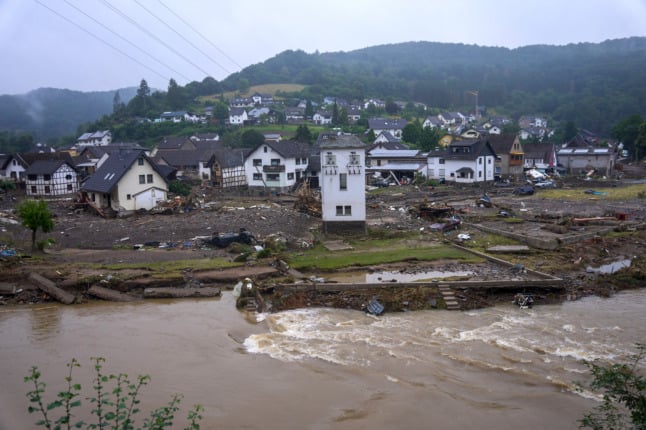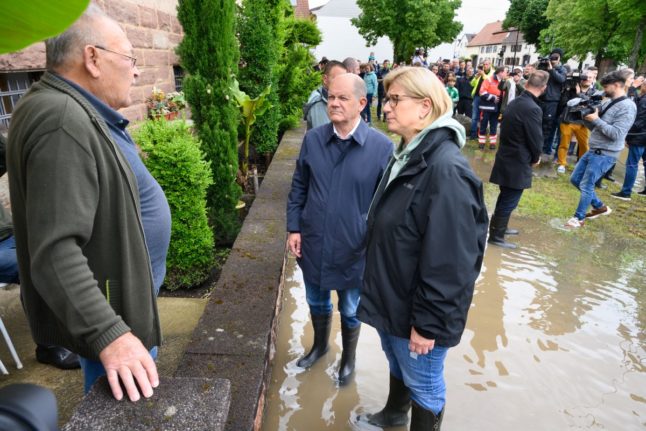Some regions could be hit by further heavy rainfall, said a meteorologist from the German Weather Service (DWD) on Thursday – though experts are still unsure where exactly these showers could strike.
As helpers and residents continue to clear up the wreckage left by last week’s storms, Rhineland-Palatinate – one of the areas worst affected by the floods – is bracing itself for further thunderstorms and rain showers over the weekend, along with neighbouring Saarland.
READ ALSO: ANALYSIS: Why Germany faces tough questions over its disaster response
After a few days of sunshine, storms and heavy rain are also likely to threaten parts of North Rhine-Westphalia (NRW) on Saturday and Sunday, according to DWD.
The rainclouds are forecast to arrive in Rhineland-Palatinate on Saturday, with localised rain-showers at noon that will spread across the region in the afternoon.
Local thunderstorms are also likely to appear on Sunday during the day, the meteorologists said.
Wetter am kommenden Samstag nach derzeitigen Modellberechnungen. Das ruhige Hochdruckwetter endet und ein unbeständiger Wettercharakter übernimmt! Zahlreiche Schauer und Gewitter sind die Folge. /V pic.twitter.com/ZFTwyQ8zrR
— DWD (@DWD_presse) July 21, 2021
On Friday, North Rhine-Westphalia is set to see a continuation of this week’s warm and sunny weather, with storm clouds gathering on Saturday.
The Eifel region, which was ravaged by flash floods on the 14th and 15th of July, will be the first area to be affected by the thunderstorms. These will spread across the state on both Saturday and Sunday.
‘No all-clear’ for more extreme weather
On Thursday, the DWD spoke of the previous week’s catastrophe as an “event of the century”.
According to climate experts, an unusually large number of stations in the west all simultaneously broke weather records due to the sheer amount of rainfall. Within a few hours or days, regions experienced an average of 1.5 times the entire average rainfall for the whole of July.
According to existing weather records, the most intense and heavy rainfall usually occurs between May and September in Germany – meaning it could still be too early to give the all-clear.
“It can be assumed that there will be more extreme weather events in 2021,” DWD confirmed.



 Please whitelist us to continue reading.
Please whitelist us to continue reading.
Member comments